Discover 8 hidden attractions, cool sights, and unusual things to do in Hacienda Heights (United States). Don't miss out on these must-see attractions: Hsi Lai Temple, National Bank of Whittier Building, and Workman and Temple Family Homestead Museum. Also, be sure to include Orin Jordan House in your itinerary.
Below, you can find the list of the most amazing places you should visit in Hacienda Heights (California).
Table of Contents
Hsi Lai Temple

Monastery in Hacienda Heights, California. Fo Guang Shan Hsi Lai Temple is a mountain monastery in the northern Puente Hills, Hacienda Heights, Los Angeles County, California. The name Hsi Lai means "coming west".
Hsi Lai Temple is a branch of Fo Guang Shan, a Buddhist organization from Taiwan. It is the order's first overseas branch temple and serves as the North American regional headquarters for Fo Guang Shan. Hsi Lai Temple was the site of the founding of Buddha's Light International Association, established in 1991. The temple, like its mother temple in Taiwan, practices Humanistic Buddhism.[1]
Address: 3456 Glenmark Dr, Hacienda Heights
National Bank of Whittier Building
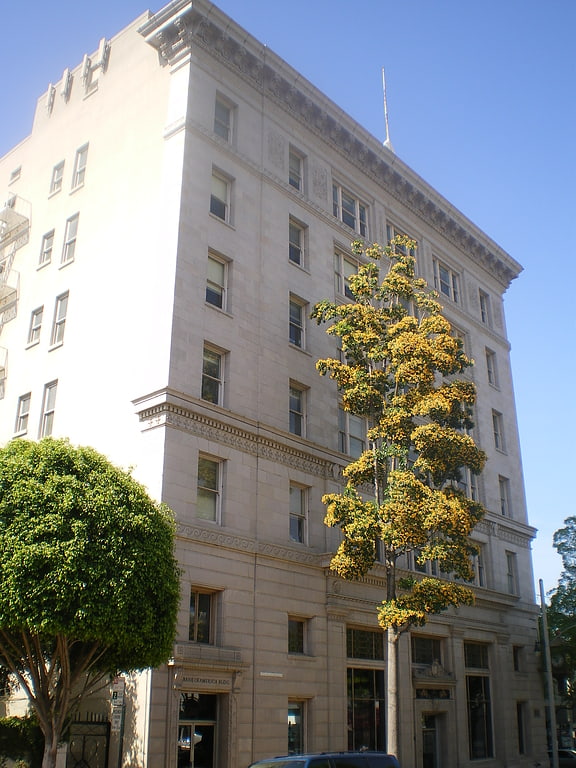
Building in Whittier, California. National Bank of Whittier Building is a historic building in uptown Whittier, California. Built in 1923 by John and David Parkinson in the Beaux Arts Neoclassical architecture style, the building was added to the National Register of Historic Places in 1982.
The current building is the best remaining example of the Beaux Arts style in the City. The building is of national significance as it was the site of Richard M. Nixon's first law office. Whittier was Nixon's boyhood home from the age of nine. In 1938 he served as the Deputy City Attorney to the City of Whittier. A replica of President Nixon's office has been re-created and is available to tour at the Whittier Historical Museum.[2]
Address: 13002 Philadelphia St, Hacienda Heights (Whittier)
Workman and Temple Family Homestead Museum
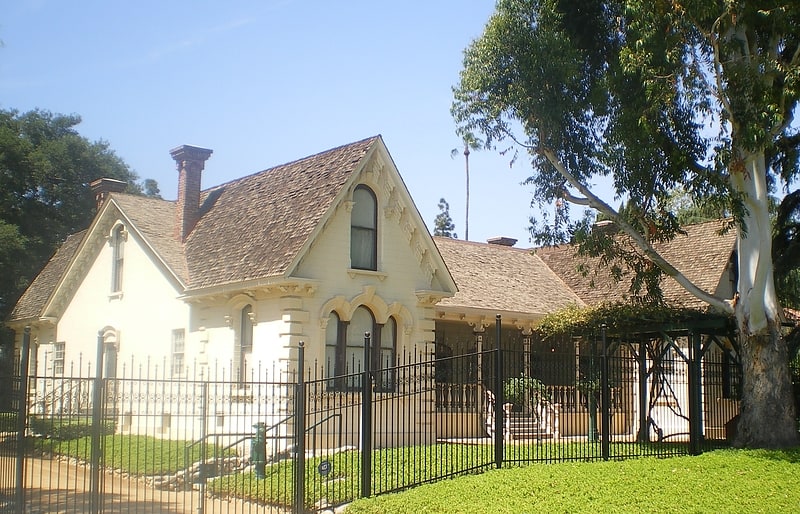
Museum in Industry, California. The Workman and Temple Family Homestead Museum is a historic house museum located at 15415 East Don Julian Road in City of Industry, California, that features the homes and private cemetery that belonged to the pioneer Workman-Temple family.[3]
Address: 15415 Don Julian Rd, Hacienda Heights
Orin Jordan House
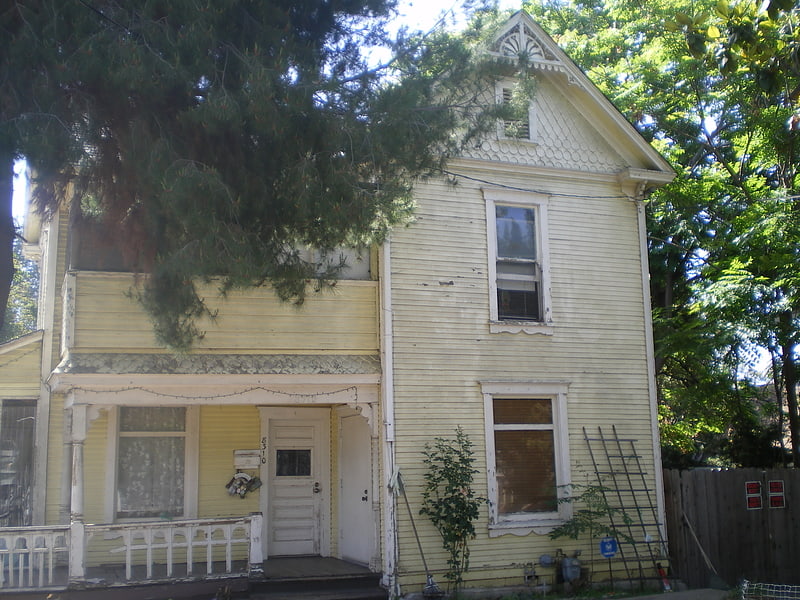
Historical place in Whittier, California. The Orin Jordan House is a Victorian house in Whittier, California that was built in 1888 by Orin Jordan. Also known as the "Old Jordan House" and the "Whitaker Home", the house is located at 8310 S. Comstock Ave.
It was built as a 29.75 by 38 feet (9.07 m × 11.58 m) two-story ell-shaped wood-frame house, with nine rooms.
The house was moved in 1926 by about 300 feet (91 m) to the southwest, to its present location on Comstock.
The Orin Jordan House was added to the National Register of Historic Places in 1980.[4]
John A. Rowland House

John A. Rowland House in the City of Industry, California was built in 1855. It was the home of pioneer John A. Rowland, of the Workman-Rowland party, co-leader of the first American band of settlers to reach Southern California in 1841. John A. Rowland built this home for his second wife, Charlotte M. Gray.
The John Rowland House is noteworthy for being the oldest surviving brick structure in Southern California. Built in 1855, the Greek Revival architecture style was used by John Rowland. Victoria, his daughter of the second marriage, inherited the home and in 1879 married Capt. John W. Hudson. The latter's daughter inherited the property and in 1920 married William Dibble of the Oakwell Rancho in Covina. It is undergoing many improvements in preparation for future reopening (the interior is currently closed due to earthquake damage).[5]
Address: 16021 Gale Ave, Hacienda Heights
El Campo Santo
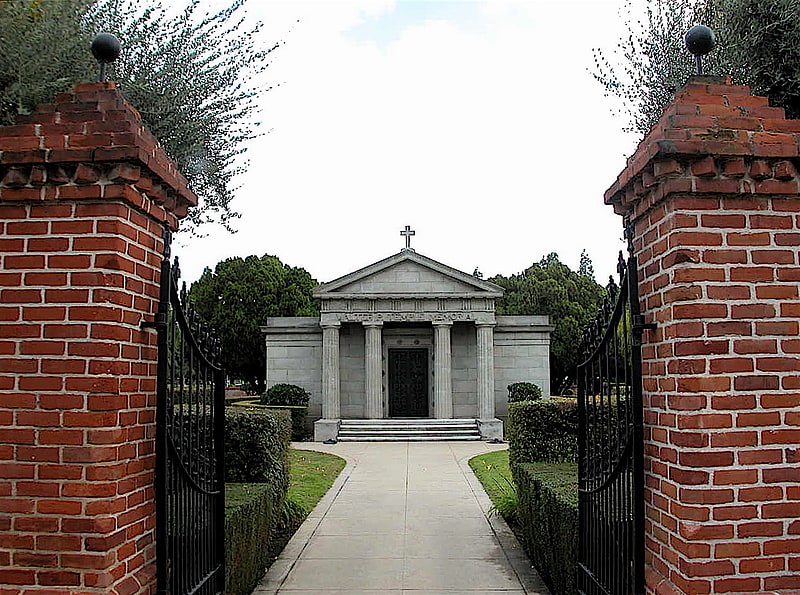
Cemetery in Industry, California. El Campo Santo is a cemetery located at the Workman and Temple Family Homestead Museum, 15415 East Don Julian Road, in City of Industry, California.
As one of the oldest private cemeteries in Southern California, El Campo Santo contains the remains of the pioneering Workman-Temple family as well as Pío Pico, the last governor of Alta California, and other prominent pioneer families. Within its low brick walls, the one-half acre cemetery features a Neoclassical mausoleum and a small cemetery plot surrounded by a Gothic Revival cast-iron fence.
In the early 1850s, the family of William Workman (1799–1867) established El Campo Santo, or "the sacred ground," as a cemetery solely for the use of their family. Along with a cemetery plot enclosed by an ornate cast-iron fence, they built a Gothic Revival brick chapel dedicated to Saint Nicholas by Bishop Thaddeus Amat of Los Angeles. Among the first to be buried here was William Workman's brother David Workman (1797–1855), who was killed in an accident while driving cattle to the gold fields in Northern California.
At the turn of the century, the cemetery was abandoned and its brick chapel destroyed by fire. Walter P. Temple, a grandson of the Workmans, successfully filed a lawsuit preventing any further desecration of the cemetery. In 1917, he was able to purchase the cemetery and the surrounding 75 acres (300,000 m2) and began restoration. In place of the chapel, however, he built a cast stone Neoclassical mausoleum and moved the remains of his family inside. In 1921, he also transferred the remains of Pío Pico and his wife, Ygnacia Alvarado de Pico, from old Calvary Cemetery on North Broadway in Downtown Los Angeles, which was being relocated, and had them entombed in the mausoleum.
The Workman Home and Family Cemetery are designated California Historical Landmark No. 874. The cemetery was placed on the National Register of Historic Places, No. 145, on November 20, 1974.
El Campo Santo is open to visitors through a self-guided tour described in the free brochure available at the museum office.[6]
Standard Oil Building
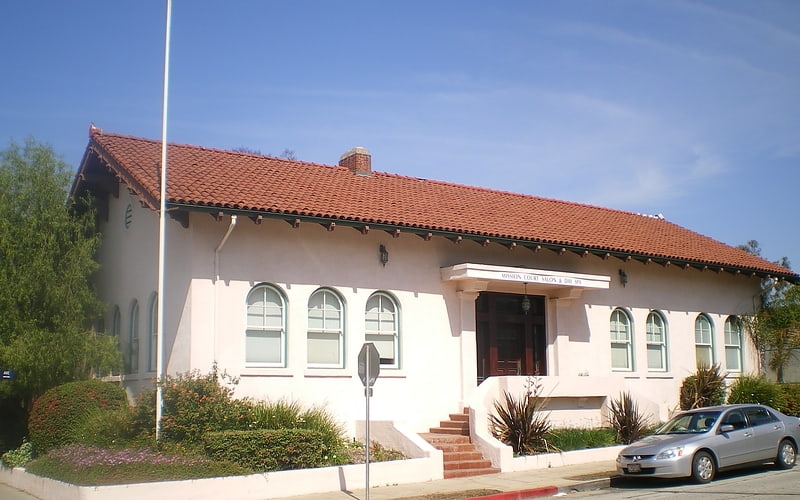
Building in Whittier, California. Standard Oil Building is a historic building in Whittier, California. Built in 1914, it was designed by Rea & Garstang in the Spanish Colonial Revival architectural style. The building was built for the Standard Oil Company, which had begun successfully drilling for oil in 1910 in the area. The building was added to the National Register of Historic Places in 1980 and is now used as a restaurant, beauty salon and day spa.
The Standard Oil Building refers tp a small complex of buildings around a courtyard; the first-built portion, built in 1914, is 32 feet (9.8 m) tall and 68 by 34 feet (21 m × 10 m) in plan.[7]
Paradox Hybrid Walnut Tree

The Paradox Hybrid Walnut Tree was planted by George Weinshank in 1907. The Paradox Hybrid Walnut Tree was designated a California Historic Landmark on May 29, 1959. The Paradox Hybrid Walnut Tree is located is in what is now the City of Whittier, California in Los Angeles County at 12300 Whittier Blvd, Whittier, Cal. George Weinshank worked with Professor Ralph Smith with the University of California in the development of Walnut Trees for growing in California. The experimental Walnut Tree is still growing and the Walnut industry in California has done well. About 99% of all the United States walnuts are grown in California. Walnuts grown in California account for two-thirds of the world’s walnut trade.[8]